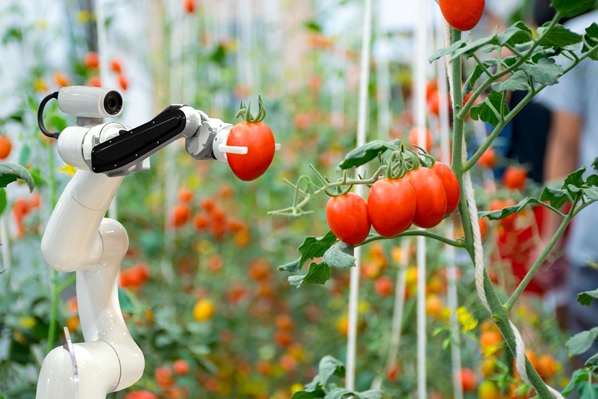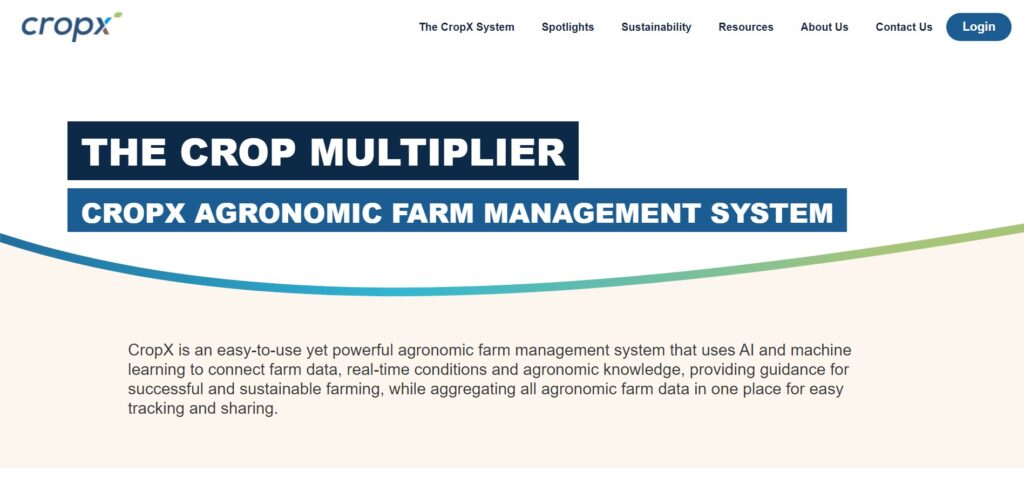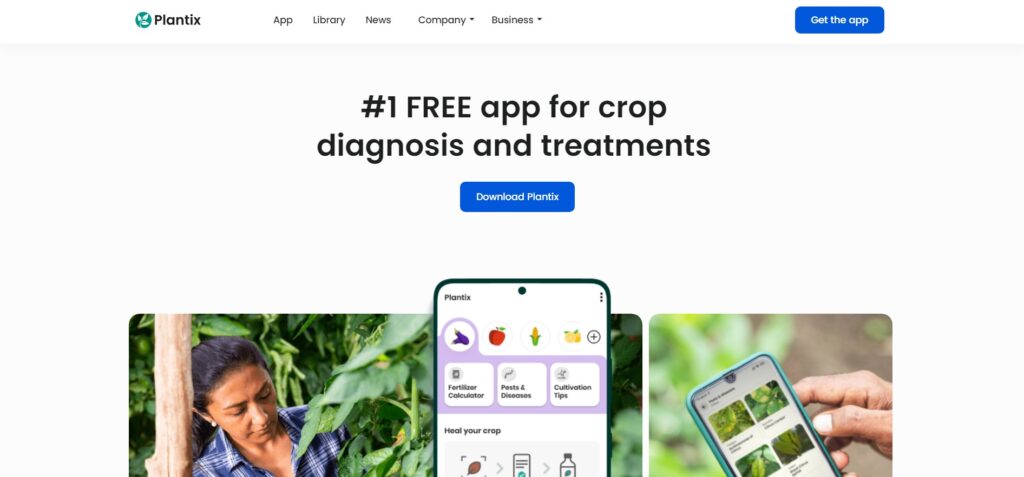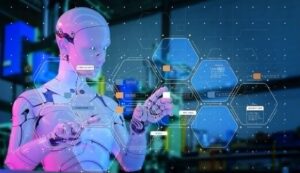AI In Farming
Present and future application of AI in farming.
Artificial Intelligence (AI) is fundamentally transforming the agricultural sector by enabling more efficient, sustainable, and data-driven farming practices.
In the face of global challenges such as climate change, resource scarcity, and the need to increase food production for a growing population, AI presents solutions that can revolutionise every aspect of farming. From automating field operations to providing real-time data insights, AI technologies are helping farmers optimise productivity while minimising environmental impact.
This article explores both the current and future applications of AI in farming, and examines real-life examples of AI implementations where applicable.

Present Applications of AI in Farming
1. Precision Agriculture
Precision agriculture, one of the most significant advancements driven by AI, allows farmers to make data-driven decisions that optimise resource use and crop productivity. AI uses sensors, drones, and satellites to gather real-time data on soil conditions, crop health, and weather patterns, enabling precise interventions.
AI-driven precision agriculture involves using advanced algorithms and data analytics to monitor crop growth, soil health, and weather conditions in real-time. Farmers can apply the right amount of water, fertiliser, and pesticides only when and where needed, which improves crop yields, conserves resources, and reduces waste.
Use Cases:
- Monitoring soil moisture levels and nutrient content to adjust irrigation schedules.
- Using AI to detect the onset of pests or diseases early, allowing for timely intervention.
- Employing machine learning algorithms to forecast optimal planting and harvesting times.
- Analysing crop health through multispectral imaging from drones or satellites.
- Customising fertilisation and pesticide applications based on soil and plant needs, improving resource use efficiency.
Real-Life Example: John Deere, a leader in agricultural machinery, uses AI in its See & Spray technology, which leverages machine learning and computer vision to identify weeds and apply herbicide precisely, reducing chemical usage by up to 90%.

Precision Agriculture – John Deere
2. Autonomous Farm Machinery
AI is also enabling the development of autonomous machinery that can perform tasks traditionally done by human labour, such as planting, ploughing, weeding, and harvesting. These machines work around the clock, reducing the reliance on manual labour and increasing efficiency.
AI-powered autonomous tractors, harvesters, and sprayers are transforming how farmers work. These machines can navigate fields, assess conditions, and complete tasks with minimal human intervention, improving accuracy and operational efficiency.
Use Cases:
- Autonomous tractors ploughing fields and planting seeds according to precise soil conditions.
- AI-controlled drones spraying pesticides or fertilisers over large fields with pinpoint accuracy.
- Robots harvesting crops without damaging them, particularly for delicate crops like fruits.
- Automated weeding machines removing only the weeds without harming crops.
- AI machines capable of operating in challenging conditions, like heavy rains or difficult terrain, without compromising productivity.
Real-Life Example: New Holland Agriculture and Case IH have developed autonomous tractors that utilise AI to plant seeds, apply fertiliser, and even harvest crops with precision, all while farmers can monitor progress remotely.

Autonomous Farm Machinery – New Holland
3. Crop and Soil Monitoring
AI sensors, drones, and IoT devices are being deployed across fields to monitor crops and soil in real-time. These devices collect data on soil moisture, nutrient levels, temperature, and crop growth, which AI algorithms analyse to provide actionable insights.
Crop and soil monitoring systems powered by AI help farmers maintain optimal growing conditions throughout the season. By analysing this data, farmers can adjust irrigation, fertilisation, and other farming practices to ensure that crops thrive under the best possible conditions.
Use Cases:
- AI analysing soil moisture to determine when and how much to irrigate crops.
- Predicting nutrient deficiencies in the soil and providing recommendations for fertilisation.
- Drones equipped with cameras capturing crop images and AI analysing these images to detect early signs of diseases or pest infestations.
- Monitoring crop growth patterns and predicting yields based on historical data.
- Using AI to forecast changes in weather and suggesting appropriate protective measures for crops.
Real-Life Example: CropX offers AI-powered soil monitoring solutions that use sensors to assess moisture and nutrient levels. This helps farmers optimise irrigation and fertiliser applications, reducing water waste and improving plant health.

Crop and Soil Monitoring – crop x
4. Pest and Disease Detection
AI-powered image recognition systems can detect pests and plant diseases early, reducing crop losses and minimising pesticide use. Farmers can use AI apps to take photos of their crops, which the app then analyses for any signs of disease or pest activity.
By combining machine learning and image processing, AI can detect the presence of pests or diseases in crops at an early stage. This allows farmers to intervene with targeted treatments before infestations or diseases spread across fields.
Use Cases:
- Identifying and diagnosing plant diseases by analysing images of affected crops.
- Using AI to predict potential outbreaks of pests based on weather patterns and past occurrences.
- Recommending eco-friendly treatments or pesticide alternatives to address pest issues.
- Predicting disease progression and helping farmers take preventative measures.
- Deploying drones equipped with AI to scan vast fields and identify problem areas quickly.
Real-Life Example: The Plantix app uses AI to help farmers diagnose over 500 different plant diseases by analysing photos. This is particularly helpful for small-scale farmers in developing regions who may lack access to experts.

Pest and Disease Detection – Plantix
5. Livestock Monitoring and Management
AI is not only applied to crop farming but also in livestock management. Using AI-powered sensors and cameras, farmers can track the health, behaviour, and productivity of their livestock, allowing them to optimise breeding and animal care.
AI enables real-time monitoring of livestock health by analysing data on feeding habits, body temperature, and movement patterns. This technology can detect early signs of illness, improving the well-being of animals and reducing mortality rates.
Use Cases:
- Tracking animal behaviour patterns to detect signs of illness or stress.
- Monitoring feeding habits and adjusting diets to ensure optimal nutrition.
- Predicting reproductive cycles and assisting in breeding management.
- Using AI to track herd movement and prevent loss or theft of livestock.
- Detecting early warning signs of outbreaks and preventing disease spread within the herd.
Real-Life Example: Cainthus is an AI company that uses computer vision to monitor dairy cows, analysing their behaviour to optimise feeding, detect illness, and improve milk production.

Livestock Monitoring and Management – Cainthus
Future Applications of AI in Farming
1. Robotic Harvesting
The future of AI in farming includes fully autonomous robots capable of performing complex tasks such as harvesting. These robots will use advanced AI systems to pick fruits and vegetables with precision, even distinguishing between ripe and unripe produce.
AI will drive robots that autonomously harvest crops, offering solutions to labour shortages, especially in fruit and vegetable farming. These robots will be able to work tirelessly without damaging delicate crops.
Use Cases:
- AI-powered robots selectively picking ripe fruits while leaving others to mature.
- Robots working around the clock during harvesting season to maximise yield.
- Reducing the reliance on seasonal or migrant labour for harvesting.
- Autonomous robots programmed to work in greenhouses or enclosed environments.
- Robots equipped with sensors to detect diseases or pest damage while harvesting.
2. AI-Driven Predictive Analytics for Crop Yields and Weather Forecasting
AI will become a more powerful tool in predicting crop yields and weather patterns. By analysing historical and real-time data, AI can forecast the impact of weather changes on crops and advise farmers on when to plant, fertilise, and harvest.
Predictive analytics powered by AI will allow farmers to anticipate changes in weather and other external factors that impact crop production, helping them plan accordingly to minimise losses.
Use Cases:
- Forecasting droughts, floods, or frost and advising farmers on protective measures.
- Predicting the optimal times for planting, watering, and harvesting crops.
- Analysing past and present weather data to advise on crop rotations or alternative crops.
- Offering real-time alerts to farmers on impending adverse weather conditions.
- Predicting future crop yields based on growing conditions, soil health, and weather patterns.
3. Swarm Robotics for Large-Scale Farming
The concept of using multiple AI-powered robots working together in “swarms” is an exciting future possibility. These robots could handle tasks like planting, fertilising, weeding, and harvesting on a large scale.
Swarm robotics involves small, AI-driven robots working collectively to perform agricultural tasks with greater efficiency. These robots can cover large areas and be deployed in fleets for rapid task completion.
Use Cases:
- Swarm robots autonomously planting seeds across large fields.
- Collective weeding and pest control by coordinating multiple robots.
- Using swarm robotics for large-scale harvesting, particularly in cereal crops.
- Robots collaborating to apply fertilisers or pesticides simultaneously across vast areas.
- Optimising tasks like soil sampling and field mapping using coordinated robots.
4. Advanced Crop Breeding and Genetic Optimisation
AI will play a crucial role in enhancing the crop breeding process by identifying genetic traits that make plants more resistant to diseases or more adaptable to climate changes.
AI algorithms will help researchers identify the best genetic combinations for crop breeding, leading to higher yields, better resistance to environmental stress, and improved nutritional content.
Use Cases:
- Accelerating the development of drought-resistant or disease-resistant crops.
- Identifying and breeding crops with higher nutritional value.
- Using AI to reduce the breeding cycle, enabling faster introduction of improved varieties.
- Breeding crops that are better suited for specific climates or growing conditions.
- Enhancing the biodiversity of crops to mitigate the risks of disease outbreaks.
5. AI-Powered Farm Management Systems
In the future, AI will integrate all aspects of farming into a single farm management platform. These platforms will automate decision-making and allow farmers to monitor, manage, and optimise their farms remotely.
Comprehensive AI-driven farm management systems will enable farmers to oversee all operations, from crop planting and livestock care to inventory management, using a unified digital platform.
Use Cases:
- Automated crop planning and rotation suggestions based on soil conditions.
- Real-time alerts for equipment maintenance or crop health issues.
- Integrating AI with drones and robots for seamless field management.
- Predicting financial returns from different crop varieties or livestock breeds.
- Using AI to suggest environmentally friendly farming practices and certifications.
Conclusion:
The present and future applications of AI in farming are reshaping the agricultural landscape. AI is already enabling farmers to achieve higher productivity, reduce environmental impact, and manage resources more efficiently.
As technology continues to advance, the potential of AI in farming will only grow, offering smarter, more sustainable solutions to the challenges faced by modern agriculture.
From precision agriculture and autonomous machinery to advanced crop breeding and swarm robotics, AI holds the key to a more efficient and resilient future for farming.

















